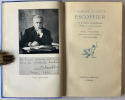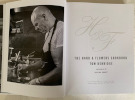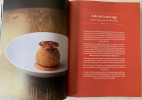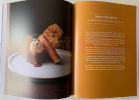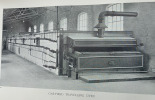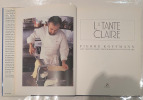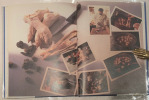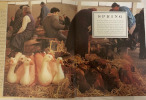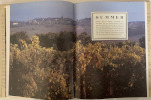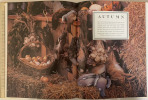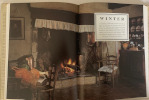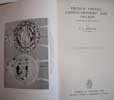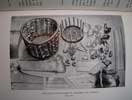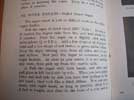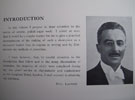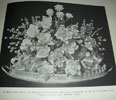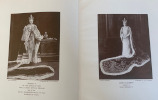A History of the Worshipful Company of Cooks.
THE COOKS and THE CITY OF LONDON A HISTORY of the WORSHIPFUL COMPANY OF COOKS LONDON published for the QUINCENTENARY of the INCORPORATION OF THE COMPANY by PETER F. HERBAGE Master 1974/5 LONDON 1982
12mo. 1fep. Half title. On verso - frontispiece of past Masters. Title page. Verso with printer's info. 1p Dedication [1] 1p Acknowledgements. [1] 1p Contents. [1] 1p Preface. [1] 2p Author's Forward. [2] 1-237. [1] 239-242 Appendix A.B&C. 243-247 List of Masters. 248-255 Appendix D.E.F.G&H. 2p Engravings. 258-260 Index. 1fep. Original full red cloth binding with gilt text on spine and gilt armorial and text on front cover. As new.
- The earliest guilds in England were the ’Frith Gilds’[sic] of Saxon Times. They were not yet associations of craftsmen. Members accepted responsibility declaring “Lets share the same lot, if any misdo lets all bear it”, and they also took an oath of fidelity. They met once a month for a guild feast, their leader being known as an Alderman. We learn from this well informed text that in 1327 a King’s writ was issued to the Mayor and Alderman ordering them to “punish such bakers, cooks etc -----, as are found lax in their work and ministries -----“. One such case of a punishment made to fit the crime, was meted out to Richard Rouse, cook to the Bishop of Rochester. In 1530, he poisoned sixteen persons with broth intended for his Master, and was subsequently sentenced to be boiled to death. Besides the stern treatment of miscreant cooks, the book informs that the ‘The Worshipful Company of Cooks’ is the smallest of the Livery Companies of the City of London. The Company traces its origins back to the 12th Century, founded from two guilds of cooks in medieval London - the Cooks of EastCheap and the Cooks of Bread Street. The Company received its Royal Charter in 1482. As you would expect from a Company whose roots can be traced back to 1170, the Worshipful Company of Cooks has a rich and colourful history from the earliest records of Cooks in the Middle Ages and their control of the craft until the 19th Century to the Company’s current charitable works. The Company is no longer an association of tradesmen in its original sense of control; yet its membership today still includes craft tradesmen, as well as active engagement with a broad range of organisations associated with cooking. The Company's purpose in contemporary times can be summarised by three principal objectives: *1- To support the modern day craft of cooking including catering excellence through competition, scholarly and scientific culinary research, and the development of food policy; *2- To fund a range of charitable activities associated with the welfare and education of the catering trade, as well as the City of London *3- To pursue a fellowship of association that can mobilise the necessary resource, skill and wisdom to bring the other two about. The Cooks' Company ranks thirty-fifth in the order of precedence of Livery Companies. Its motto is ‘Vulnerati Non Victi’, Latin for ‘Wounded not Conquered’. This is a well researched history that brings the reader thro’ the ages of a London Livery Company and its total of nine charters granted by various Kings and Queens. A 1st edition of this book was compiled in 1932 with 207 pages. See item -ref: # 11222, on this site.






click on image to enlarge

Modern category
ref number:
11112 

